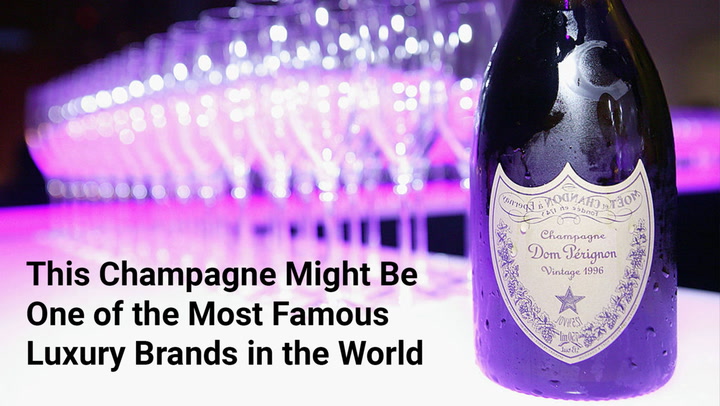1. Summary of Dom Pérignon Champagne
This article provides an in-depth look at Dom Pérignon Champagne, highlighting its unique vintage-only approach, special products like Rosé and Plénitude 2, and the insights from Chef de Cave Vincent Chaperon.
Plus, everything you need to know about Dom Pérignon Rosé and Plénitude 2.
Dom Pérignon is one of the most renowned luxury Champagne brands globally. Despite its fame, many enthusiasts may not be familiar with its unique winemaking style and diverse Champagne offerings.
A key fact that any Champagne lover should understand is that Dom Pérignon exclusively produces vintage Champagnes. This means that the brand uses grapes from a single “vintage” — a term referring to the year — for each release. This practice distinguishes Dom Pérignon, as many other producers opt for non-vintage wines, blending harvests from various years to achieve a consistent house style. Consequently, this method ensures that a Champagne maintains its taste across different years, regardless of the varying weather conditions or factors affecting a harvest.
In the finest years, other producers may release a vintage Champagne. However, Dom Pérignon’s sole focus on vintage products enhances its stature. Chef de cave (cellar master) Vincent Chaperon aims to capture the essence of each vintage while pushing the boundaries of Champagne production. Each release offers a unique expression of its time, allowing connoisseurs to journey back to the year the grapes were harvested.
While Dom Pérignon is predominantly recognized for its iconic vintage Champagne, there are additional noteworthy products to discover. During certain vintages, the house produces a Rosé Champagne, alongside two aged offerings: Plénitude 2 and Plénitude 3. In an exclusive interview, Chaperon elaborated on what makes these Champagnes so extraordinary and how they convey a distinct sense of place.
Rosé Champagne showcases the pinot noir grape and tends to be more intense and fruit-driven than regular Champagnes. The latest Rosé vintage, 2008, was the first overseen by Chaperon since he became chef de cave. This year is celebrated as one of the pinnacle years in Champagne history, making this Rosé a particularly significant release.
“As the archetype of a classic year in Champagne, 2008 provided an ideal opportunity for exploration,” Chaperon stated. “We experimented with all the subtleties of the pinot noir grape, unveiling the radical essence of Dom Pérignon Rosé Vintage 2008. The fruit presented itself with remarkable aromatic intensity, coupled with a consistency that opened a multitude of possibilities. The pursuit of harmony that defines Dom Pérignon is crafted from contrasts and sometimes even contradictions.”
Moreover, what adds depth to the Dom Pérignon story is the extensive aging process of its products. All Champagne must age for a minimum of 15 months in the bottle prior to release; however, luxury brands, including Dom Pérignon, often extend this time. Most of its releases are matured for at least seven years, with some vintages designated for even longer aging. Plénitude 2, for example, ages for approximately 15 years before release, allowing the Champagne to gain complexity and evolve into something extraordinary. “After close to 15 years, the wines ascend to new heights, presenting wider, deeper, longer, and more intense flavors, accompanied by superior longevity. This is Plénitude 2,” Chaperon remarked.
The most recent Plénitude 2 is the 2004 vintage, which has undergone even longer maturation before release. “Eighteen years of aging have imparted character to the wine, while simultaneously revealing the vintage, emphasizing a glorious minerality,” Chaperon added.
Many perceive Champagne as a beverage reserved for celebrations and toasts; however, it is also a delightful wine suitable for pairing throughout a meal, with each vintage possessing natural affinities. Chaperon notes that the robust structure and body of the Rosé Vintage 2008 “encourage deeper exploration of spiciness,” while the minerality of Vintage 2004 Plénitude 2 complements a wide range of cuisines. “It’s exhilarating to see Plénitude 2 enhanced by innovative dishes from culinary masters such as Thomas Keller at The French Laundry, Niki Nakayama at n/naka, and Yoshihiro Narisawa at Narisawa,” Chaperon commented.
The concept of terroir, which encompasses how weather, soil, climate, and vineyard location influence a wine’s character, plays a significant role in Champagne appreciation. The Champagne region boasts a unique terroir that shapes the final product, elevating Champagne above sparkling wines produced in other regions, even those crafted in a similar style.
Although the Champagne region serves as Dom Pérignon’s base, the brand frequently introduces new vintages in unconventional locations — from Iceland and Hawaii to Marfa, Texas. This innovative approach broadens its reach and invites new aficionados into its culture.
“Dom Pérignon reinvents itself with every vintage,” Chaperon expressed. “Each vintage is a unique creation, a harmonious dialogue between the character of the year and the signature style of Dom Pérignon. For us, an exceptional location serves as a medium to express and highlight the singularity of each vintage.”
Furthermore, while Dom Pérignon Champagne can be found at select wine shops, for an experience that transcends the ordinary, Chaperon suggests enjoying it in select settings: Atomix in New York City; Singlethread in Healdsburg, California; and Californios in San Francisco.
“Champagne embodies culture, creativity, imagination, history, and projection,” Chaperon concluded. “I believe that Dom Pérignon is continually evolving, and I am determined to push its boundaries.”





